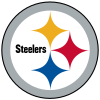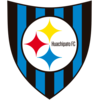History
The Steelmark logo was unveiled in January 1960, with AISI president Benjamin F. Fairless proclaiming that the campaign marked "the first time that steel has been merchandised industry-wide at the consumer level". Fairless predicted that the program would help American steel makers fend off demand for imports. [2]
Individual steel makers could use the design to promote the steel in finished products, and to help create a competitive awareness of the strength and quality of steel against aluminum and plastics. In 1964, the steel industry distributed 21 million of the Steelmark decals to be affixed to appliances and other household products. [3]
In the original 1960 announcement of the program, the three hypocycloids were said to represent "the modernity, lightness and stylishness" of consumer products made of American steel. [2] Later interpretations were that the Steelmark highlighted the attributes of steel, with yellow representing "lightens your work", the orange denoting "brightens your leisure" and the blue meaning that steel "widens your world". The definition of the logo components was updated to represent the three materials used to produce steel, with yellow for coal, orange for iron ore and blue for scrap steel. [1]

The Cleveland Browns are a professional American football team based in Cleveland. Named after original coach and co-founder Paul Brown, they compete in the National Football League (NFL) as a member club of the American Football Conference (AFC) North division. The Browns play their home games at Cleveland Browns Stadium, which opened in 1999, with administrative offices and training facilities in Berea, Ohio. The Browns' official club colors are brown, orange, and white. They are unique among the 32 member franchises of the NFL in that they do not have a logo on their helmets.

The Cincinnati Bengals are a professional American football team based in Cincinnati. The Bengals compete in the National Football League (NFL) as a member club of the league's American Football Conference (AFC) North division. The club's home games are held in downtown Cincinnati at Paycor Stadium.
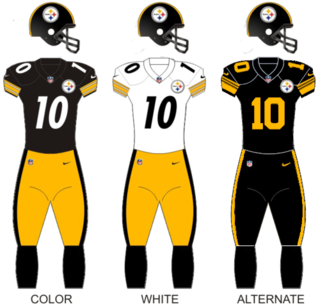
The Pittsburgh Steelers are a professional American football team based in Pittsburgh. The Steelers compete in the National Football League (NFL) as a member club of the American Football Conference (AFC) North Division. Founded in 1933, the Steelers are the seventh-oldest franchise in the NFL, and the oldest franchise in the AFC.

United States Steel Corporation, more commonly known as U.S. Steel, is an American integrated steel producer headquartered in Pittsburgh, Pennsylvania, with production operations primarily in the United States of America and in Central Europe. The company produces and sells steel products, including flat-rolled and tubular products for customers in industries across automotive, construction, consumer, electrical, industrial equipment, distribution, and energy. Operations also include iron ore and coke production facilities.

In geometry, a hypocycloid is a special plane curve generated by the trace of a fixed point on a small circle that rolls within a larger circle. As the radius of the larger circle is increased, the hypocycloid becomes more like the cycloid created by rolling a circle on a line.
Big Jim was a line of action figure toys produced from 1972 through 1986 by Mattel for the North American and European markets. He was renamed Kid Acero in Latin America and, for a short period of time, Mark Strong in Europe. Originally inspired by G.I. Joe, the Big Jim line was smaller in size and each figure included a push button in the back that made the character execute a karate chop action. The action figure's arms were made of a soft plastic/vinyl material and contained a mechanism that simulated the bulge of a biceps when the elbow was bent. Big Jim was less military-oriented than the G.I. Joe line, having more of a secret agent motif, but also had a large variety of outfits and situations available including sports, space exploration, martial arts, hunting, western, camping, fishing, and photography.

Throwback uniforms, throwback jerseys, retro kits or heritage guernseys are sports uniforms styled to resemble the uniforms that a team wore in the past. One-time or limited-time retro uniforms are sometimes produced to be worn by teams in games, on special occasions such as anniversaries of significant events.
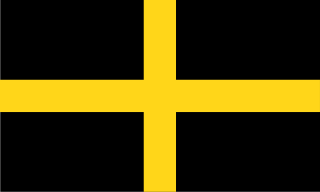
The flag of Saint David represents the 6th-century Saint David, a Welsh bishop of Menevia and the patron saint of Wales. It is normally a yellow cross on a black field, but it has also appeared as a black cross on a yellow field or with an engrailed cross.
The 1997 NFL season was the 78th regular season of the National Football League (NFL). The Oilers relocated from Houston, Texas to Nashville, Tennessee. The newly renamed Tennessee Oilers played their home games during this season at the Liberty Bowl Memorial Stadium in Memphis, Tennessee while construction of a new stadium in Nashville started. Houston would rejoin the NFL with the expansion Texans in 2002.

Huachipato FC is a Chilean football club based in Talcahuano that currently plays in the Chilean Primera División. Huachipato was founded on 7 June 1947 by workers of the homonymous steel mill in Talcahuano, and it currently plays its home games at the Estadio Huachipato-CAP Acero, which it owns, making it one of the five Chilean professional football clubs to own their own ground. Originally a multisports club, Huachipato became a football club in 2015.

G.I. Joe: America's Movable Fighting Man is a line of action figures produced by Hasbro. The initial product offering represented four of the branches of the U.S. armed forces. The term G.I. stands, in popular usage, for Government Issue and became a generic term for U.S. soldiers, especially ground forces. The term originated in WWI, when much of the government-issued equipment was stamped "G.I.", meaning that it was made from galvanized iron. The development of G.I. Joe led to the coining of the term "action figure".
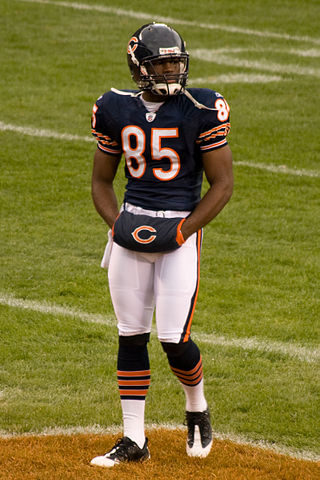
The Chicago Bears of the National Football League (NFL) sport a bear head logo, which the team has used as their primary since 2023. Since the team's inception in 1920, the Bears' uniforms have received very little changes, with minor changes and various patches added. The classic look of the club's uniforms has given it the title of one of the best uniform sets in the league. During its history, the Bears have worn uniforms manufactured by Nike, Reebok, and Champion.
The Kansas City Chiefs, a professional American football franchise from the National Football League, are known for their unique "KC" arrowhead logo and red and white uniforms—both almost unchanged since the franchise's relocation in 1963. From 1960 to 1962, the team was known as the Dallas Texans and had very similar team logos and uniforms.

Cold-formed steel (CFS) is the common term for steel products shaped by cold-working processes carried out near room temperature, such as rolling, pressing, stamping, bending, etc. Stock bars and sheets of cold-rolled steel (CRS) are commonly used in all areas of manufacturing. The terms are opposed to hot-formed steel and hot-rolled steel.
Formed in 1975, Ral Partha Enterprises, Inc. of Cincinnati, Ohio, United States, is now known as Ral Partha Legacy Ltd. and produces miniature figures in 25 mm, 30 mm, 15 mm, and 54 mm scale. The company's products are made by spin-casting metal alloys which depict soldiers, adventurers and creatures that have been inspired by history and fiction. Their miniatures are sold at gaming conventions, in hobby shops, and by internet and mail order for use in role playing games, wargaming, dioramas, competitive painting, and collecting.
The Pittsburgh Steelers of the National Football League were founded in 1933. Over the course of the team's history, the team has had several logos while wearing virtually the same uniforms over the years, with subtle changes made to give the uniforms an updated look. The team colors, uniforms, and logo are often ranked as being among the best in the NFL.
The 2010 Primera División del Fútbol Profesional Chileno season was the 79th season of top-flight football in Chile. Originally comprising two tournaments, the 2010 season was the first single-stage season since 2001. This was due to the devastating 8.8 magnitude earthquake on February 27, 2010. Universidad Católica won their tenth title.
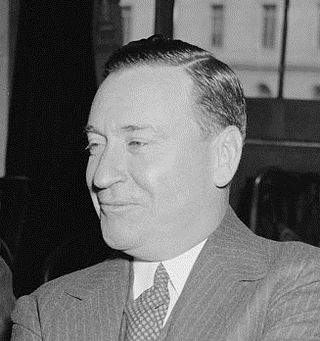
Benjamin Franklin Fairless was an American steel company executive. He was president of a wide range of steel companies during a turbulent and formative period in the American steel industry. His roles included President of Central Alloy Steel from 1928 to 1930; First Vice President of Republic Steel from 1930 to 1935; President of the Carnegie-Illinois Steel Company from 1935 to 1938; and then President (1938–1955), and later Chief Executive Officer and Chairman of the board of directors (1952–1955) of U.S. Steel, the largest steel corporation in the United States.

The New York Mets, founded in 1962, returned National League baseball to New York following the departure of the Brooklyn Dodgers to Los Angeles and the New York Giants to San Francisco. The Mets' uniform was designed to incorporate elements of both departed clubs, with the Dodgers' royal blue becoming the Mets' primary color and the Giants' orange the trim color, along with the Giants' "NY" crest adopted as the new team's cap logo. The original Mets uniform had a "clean and classic" look that, while it has undergone a number of changes over the course of the team's history, has never been substantially revised. The basic template has always been a conventional short-sleeved baseball uniform with "Mets" in cursive script on a white pinstriped home jersey, and either "NEW YORK" or "Mets" on a gray road jersey, with the lettering and numerals in blue outlined in orange. The most notable variations were the "racing stripe" uniforms of the 1980s and early '90s, and the addition of black as a trim color along with black alternate jerseys and caps that were worn from 1998 through 2011. For 2012, in recognition of its 50th anniversary, the club restored its classic look by removing the black trim from all of its uniforms and phasing out the black jerseys and caps. Since then the club has adopted blue alternate jerseys and caps but has generally worn its primary uniform in most games, home and away.
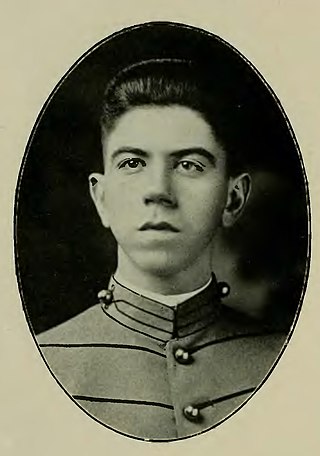
Charles McElroy White was an American steel manufacturing executive. He was a protégé of Tom M. Girdler, and was briefly superintendent of Jones and Laughlin Steel Company in 1929. He followed Girdler to the rapidly growing Republic Steel in 1930, where he was appointed president of the company in 1945. He was promoted to chairman of the board of directors and chief executive officer in 1956. He retired in 1960.


